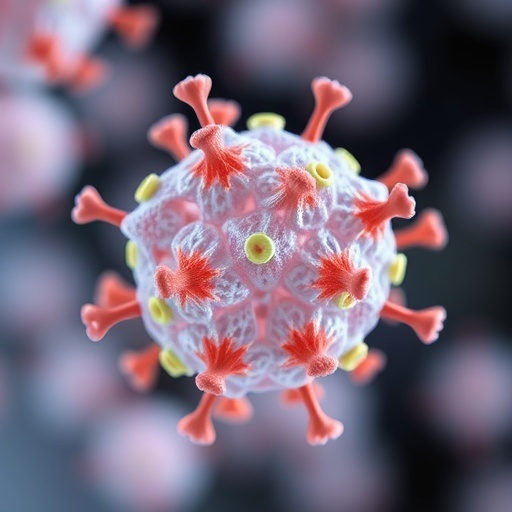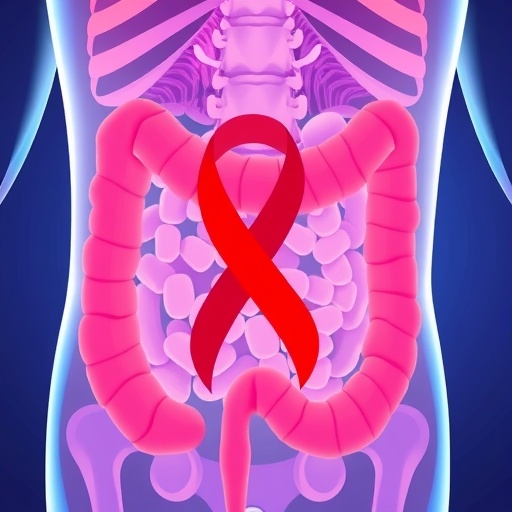In the ongoing battle against cancer, researchers worldwide relentlessly pursue innovative therapies that can improve treatment efficacy while minimizing side effects. A revolutionary approach that has garnered significant attention recently involves the use of fluorinated chitosan, a chemically modified biopolymer, as a nanoplatform for targeted drug delivery. This cutting-edge technology promises a new frontier in cancer therapy by enabling enhanced penetration, controlled release, and superior targeting of chemotherapeutic agents within malignant tissues, potentially transforming the landscape of oncological treatments.
Chitosan, a naturally derived polysaccharide obtained primarily from crustacean shells, has long been celebrated for its biocompatibility, biodegradability, and remarkable ability to be chemically modified. However, its inherent limitations, such as limited solubility and suboptimal stability in physiological environments, have restricted its widespread application in drug delivery. Fluorination, the introduction of fluorine atoms into the chitosan molecular structure, dramatically alters its physicochemical properties. This modification imparts increased hydrophobicity, enhanced stability, and improved cellular uptake, thereby representing a significant leap in nanocarrier design.
The unique properties of fluorinated chitosan stem from the electronegativity and small atomic size of fluorine atoms, which create stronger intermolecular interactions and increase membrane permeability. This translates into superior transport across cellular membranes, a critical hurdle in effective chemotherapy. By incorporating fluorine atoms, the modified chitosan nanoplatforms exhibit a finely tuned balance between hydrophilicity and hydrophobicity, enabling them to traverse both aqueous environments and lipid-rich cell membranes with unprecedented efficiency.
In the research summarized by Kapoor et al., published in Medical Oncology, extensive in vitro and in vivo experiments highlighted the fluorinated chitosan nanoplatform’s capability to deliver a wide spectrum of anticancer drugs, including doxorubicin and paclitaxel. The nanocarriers demonstrated prolonged circulation times, increased drug accumulation at tumor sites, and significantly enhanced apoptosis in targeted cancer cells. Crucially, the modified chitosan also displayed minimal off-target toxicity, alleviating one of the most pressing concerns associated with conventional chemotherapy.
Moreover, the fluorination process was meticulously optimized to preserve the biodegradable nature of chitosan while simultaneously improving its mechanical robustness. This novel balance ensures that drug-loaded nanoparticles remain stable during systemic circulation but degrade appropriately upon reaching the tumor microenvironment, facilitating controlled drug release. The research team employed advanced synthesis techniques, such as selective fluorination under mild reaction conditions, maintaining biocompatibility without compromising therapeutic efficacy.
One striking advantage of the fluorinated chitosan system lies in its ability to overcome multidrug resistance (MDR), a formidable challenge in oncology. MDR often results from the overexpression of efflux pumps that expel anticancer drugs from cells, diminishing therapeutic concentrations intracellularly. Fluorinated chitosan nanoparticles bypass these efflux mechanisms more effectively, facilitating higher intracellular drug retention and, consequently, increased cancer cell sensitivity to chemotherapeutics.
Furthermore, the nanocarriers’ surface can be functionalized with targeting ligands, such as antibodies or peptides, that recognize specific biomarkers on cancer cells. This targeting specificity amplifies the accumulation of therapeutic agents in malignant tissues while sparing healthy cells, reducing systemic toxicity. The study demonstrated that fluorinated chitosan conjugated with folate receptors, frequently overexpressed in various tumors, significantly boosted targeted delivery, an encouraging result for personalized medicine.
The fluorinated chitosan platform also displays remarkable versatility beyond drug delivery. Its robust physicochemical characteristics make it an excellent candidate for combined therapeutic strategies, such as photothermal therapy (PTT) and photodynamic therapy (PDT). By incorporating photosensitizers or photothermal agents within the nanoparticle matrix, multimodal treatments synergistically eradicate cancer cells while reducing drug dosages and associated side effects.
Importantly, the biocompatible and biodegradable components of the fluorinated chitosan minimize the immune response and inflammation often triggered by synthetic nanomaterials. This biocompatibility not only ensures patient safety but also paves the way for repeated dosing regimens, which are essential for chronic cancer management. The degradation byproducts are harmlessly metabolized and excreted, addressing a significant concern related to nanoparticle accumulation in organs.
Clinical translation of these promising findings remains a pivotal next step. The research emphasizes scaling up production under Good Manufacturing Practice (GMP) conditions and conducting rigorous toxicity assessments in larger animal models. Additionally, the pharmacokinetics, biodistribution, and long-term safety profiles require comprehensive evaluation before initiating human clinical trials. Nevertheless, the results thus far inspire optimism that fluorinated chitosan-based drug delivery systems could soon enter the clinical domain.
From an industrial perspective, the synthesis of fluorinated chitosan leverages cost-effective raw materials and scalable chemical processes, which makes the nanoplatform commercially feasible. The modularity of this platform also enables rapid customization to target various cancer types and integrate new therapeutic agents, fulfilling the rising demand for precision oncology solutions. Partnerships between academia, pharmaceutical companies, and regulatory bodies will be instrumental in accelerating this transition.
In summary, the advent of fluorinated chitosan represents a paradigm shift in the field of cancer nanomedicine. By elegantly merging the biocompatibility of natural polymers with the superior physicochemical benefits of fluorination, this nanoplatform offers a multifaceted solution to the longstanding obstacles in drug delivery. Enhanced cellular uptake, controlled biodegradation, targeting abilities, and synergy with adjunct therapies coalesce to promise improved patient outcomes and quality of life.
As the global burden of cancer continues to rise, innovative technologies like fluorinated chitosan-based nanocarriers become not just desirable but essential. Their potential to revolutionize treatment regimens, lower systemic toxicities, and overcome drug resistance offers hope for more effective and humane cancer therapies. The research led by Kapoor and colleagues is a testament to the power of interdisciplinary science bridging chemistry, materials engineering, and oncology to meet urgent healthcare challenges.
Future research directions will likely focus on integrating real-time imaging capabilities into these nanoparticles to monitor therapeutic delivery and response, thus enabling adaptive treatment protocols. Exploring combination therapies, including immunomodulatory agents and gene editing tools, with fluorinated chitosan nanoplatforms could open new horizons. Additionally, expanding investigations into other disease models could broaden the utility of this technology beyond oncology.
In conclusion, fluorinated chitosan stands at the forefront of nanotechnology-enabled cancer therapy. Its unique properties and versatility underscore a bright future in the clinical arsenal against cancer. With continued research, development, and collaborative efforts, this promising nanoplatform could soon realize its full potential, dramatically altering the landscape of cancer care.
Subject of Research: Advances in cancer therapy utilizing fluorinated chitosan as a nanoplatform for targeted drug delivery.
Article Title: Advances in cancer therapy using fluorinated chitosan: a promising nanoplatform for drug delivery.
Article References:
Kapoor, D.U., Pareek, A., Patel, S. et al. Advances in cancer therapy using fluorinated chitosan: a promising nanoplatform for drug delivery. Med Oncol 42, 452 (2025). https://doi.org/10.1007/s12032-025-03022-7
Image Credits: AI Generated
Tags: advanced cancer treatment technologiesbiodegradable polymers in medicinebiopolymer modifications in oncologychemotherapeutic agent targetingenhanced drug penetration in tumorsfluorinated chitosan for cancer therapyfluorination effects on chitosanimproving treatment efficacy in cancernanocarrier design innovationsnanoplatforms for chemotherapyovercoming drug delivery challengestargeted drug delivery systems





